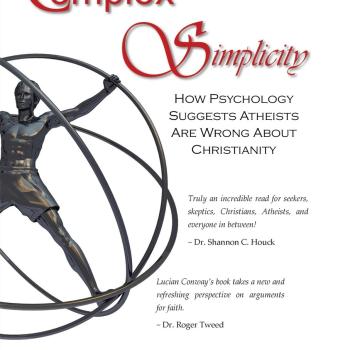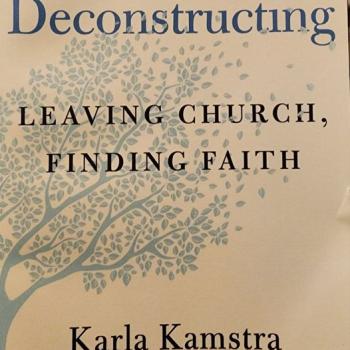
It has long been argued in religious conversion studies whether there is a significant difference between conversion and deconversion. One line of reasoning goes something like this: every conversion to something is a deconversion away from something else. So that a person who becomes a Christian is changing a great deal of his or her worldview as a result of the conversion, and discarding old notions as a result. The reverse would also be true. A person deconverting from Christianity would be changing worldviews to adopt new standards and ideas.
As a researcher, I reject this idea. Deconversion is marked by a significant and ongoing rejection of and aversion towards religious ideas. This is signified by the fact that the self-labeled atheist identifies specifically with his or her rejection of religion, not an embrace of some alternative to religion (as opposed to, for instance, a Christian who converts to Islam, and identifies with a new and distinct religion). It is also signified by the rising prominence of the idea of “spiritual abuse” and “religious trauma syndrome” which are relatively new terms and ideas in the literature, but also increasingly visible in the “deconstruction” community.
The question then becomes, can any sort of comparison be made between models of religious conversion and models of religious deconversion? In order to examine this question, let us look at one of the earliest and most influential models of religious conversion:
THE LOFTLAND AND STARK MODEL FOR CONVERSION HAS SEVEN STEPS. ROUGHLY:
1.) Chronic Stressor
2.) Problem-Solving Behavior
3.) Religious Seeking
4.) Encounter Divine Precept (turning point or moment of inspiration)
5.) Forms bond with one or more religious individuals
6.) Reduction of bonds with extra-religious individuals
7.) Increase in religious interactions
I COULD FORM A ROUGHLY ANALOGICAL DECONVERSION MODEL AS FOLLOWS:
1.) Introduction of a new life stressor
2.) solution seeking behavior
3.) failure in finding religious solutions
4.) trigger event (a specific event or doubt that gives the individual permission to begin questioning their beliefs)
5.) deconstruction or tinkering
6.) rejection of religious practices and community
7.) seeking replacement community/practices
This is a somewhat modified version of my five-stage model, but it does contain some important steps not included in my original model.
Notice that in step 7, the person has not rejected the religious community in favor of a new community. Rather, they seek a new community AFTER they have left the religion. It was the rejection of the religion, not the introduction of a new community which drove the behavior.
On the other hand, religious conversion frequently FOLLOWS the introduction to a new community. In other words, they become attracted to a person or community, and adopt those beliefs and practices following that attraction.
So whereas conversion is the acceptance of a new life based on an attraction to that community, DEconversion is the rejection of a community followed by the search for a substitute lifestyle and community.
Search for Community
This search for a new community is significant. Among the most powerful mental health benefits of religion is the in-built sense of community and shared values it offers. As I have stated elsewhere, the type of person who deconverts is the type of person who is deeply involved in his or her religion. Going from having a strong community to having no community at all is a difficult, and often ongoing problem. People who adopt the label of “atheist” frequently report feeling marginalized, and compare the process of revealing their atheism to friends and family to the so-called “coming out of the closet” for homosexual individuals. They indicate that this is frequently accompanied by rejection and isolation from family and peers.
This is very much the reverse of standard conversion models, which all report the discovery and acceptance into a community as the hallmark of conversion. I am not aware of any models that exist which detail how a person converts to a religion in a private way, involving no religious community. No doubt such things have happened at some point in history, but we have no data by which to model this process.
On the other hand, deconversion is almost universally a very private process, and deconverts report a sense of isolation and mental anguish associated with gradually losing their beliefs (although frequently a sense of relief or freedom upon discarding the beliefs entirely). They report that their religious peers are unwilling to discuss their doubts and questions, and they frequently begin to engage with atheist or skeptic materials because these better reflect their developing thoughts and personal problems with religion.
Conclusion
There are some shared features that accompany any kind of change in worldview, however there is something particularly unique about becoming convinced of the wrongness of your existing worldview apart from adopting an equivalent replacement view. Herein lies the fundamental difference between deconversion and conversion.













